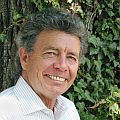Parksville 2019 on YouTube > Beacons of Hope on Vancouver Island – “Bowker and Brooklyn creek restoration success stories are provincially significant precedents. Inspirational in scope, each has a long history,” stated Kim Stephens, Partnership for Water Sustainability in BC, in his context presentation for the afternoon session on Day Two of the Symposium (April 2019)

“Each demonstrates how local government partnerships with stewardship groups can be transformational and ‘improve where we live’. These precedents are beacons of hope,” stated Kim Stephens. Stewardship operates under a different dynamic than the private sector or government. Stewards are drawn together for a common cause, like-minded individuals with a vision for the greater good. This purpose is not to be found in the policy manuals of government, nor in regulations or legislation. Rather, it is built upon an enthusiastic personal commitment and passion by a band of individuals to make a difference.










